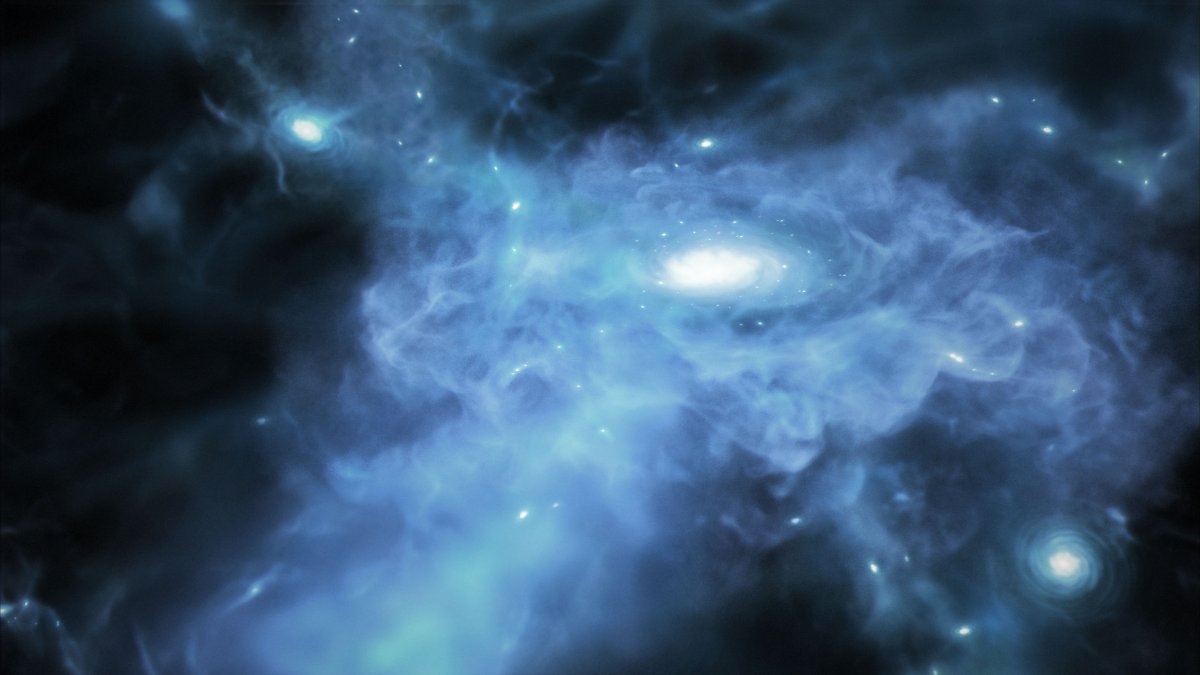For the first time in the history of astronomy, the James Webb Space Telescope succeeded in observing the formation of early galaxies more than 13.3 billion years ago. A research team led by Kasper Elm Heintz from the University of Copenhagen has made this public. The light now analyzed comes from “shimmering islands in a sea of neutral and opaque gas”, Describes the world of astrophysicists. The space telescope sees their formation during the era of so-called reionization, when the first galaxies made the universe transparent. While the galaxies there were found at a later stage of evolution, the formation of the three galaxies can be seen “live,” so to speak.
advertisement
The origin is in a largely mysterious universe
NASA explains that the space telescope sees the three galaxies only as “subtle red spots.” But spectroscopic studies showed that some of the light was absorbed by large amounts of neutral hydrogen gas. This must be very widespread in the galaxy and obscure a large portion of it. This result suggests that, to some extent, we are watching this neutral gas clumping together in galaxies, where it cools, clumps together and forms new stars, explains co-author Darach Watson. The team has already requested more observing time to find out exactly where this gas is located in galaxies and exactly how far its origin is.
During reionization, the transparent universe we know today was created about 500 to 900 million years after the Big Bang. During this “cosmic dawn” the first stars and galaxies separated electrons from hydrogen nuclei (protons). They could no longer absorb photons (i.e. light), and the universe became transparent. The James Webb Space Telescope had already determined that most of this reionization was done by relatively small dwarf galaxies, which acted like cosmic beacons. It was previously not clear which structures provide the necessary radiation, and it is also possible that supermassive black holes or massive galaxies exist.
We see the three galaxies now discovered that are currently forming during this era in the state they assume about 400 to 600 million years after the Big Bang. NASA explains. At the time, these galaxies were not isolated ecosystems, but were closely connected to intergalactic structures made of pristine gas, explains co-author Simon Nielsen. The team explains that it would not have been possible to capture or collect images and spectral data from this era before the James Webb Space Telescope became operational. They have now published their research in the scientific journal Science.
(meh)

“Total coffee aficionado. Travel buff. Music ninja. Bacon nerd. Beeraholic.”








More Stories
Coral Seeding: Artificial Insemination Makes Coral More Heat Tolerant
Fear, Anger, and Denial: How People Respond to Climate Change – Research
LKH Graz: Using radiation to combat heart arrhythmias